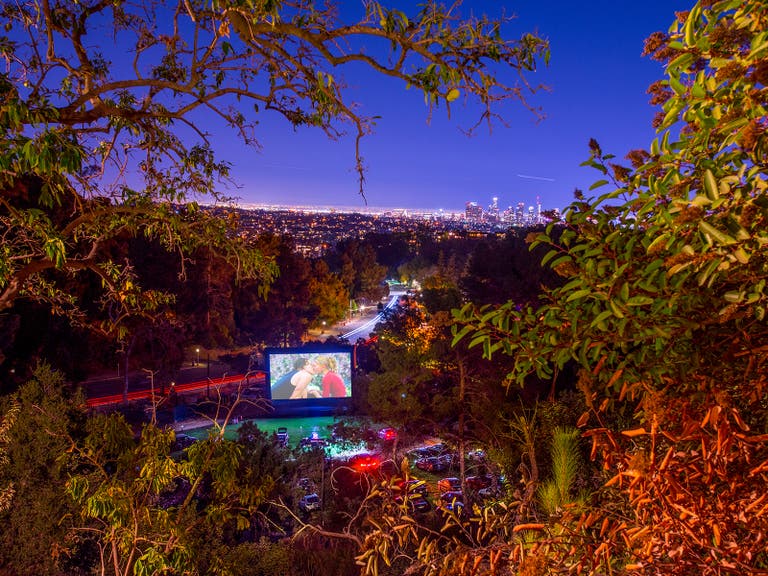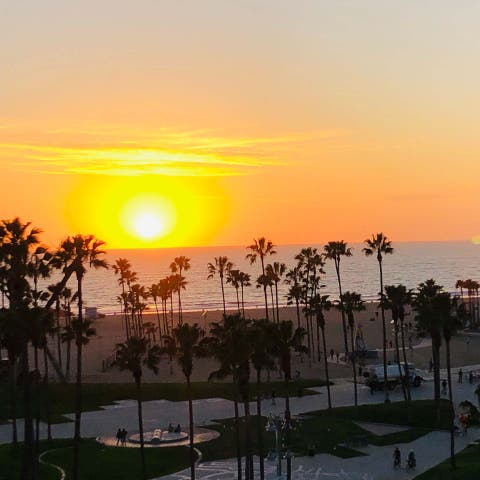Discover David Lynch’s Secret Los Angeles
Explore locations from "Eraserhead" to "Twin Peaks: The Return"
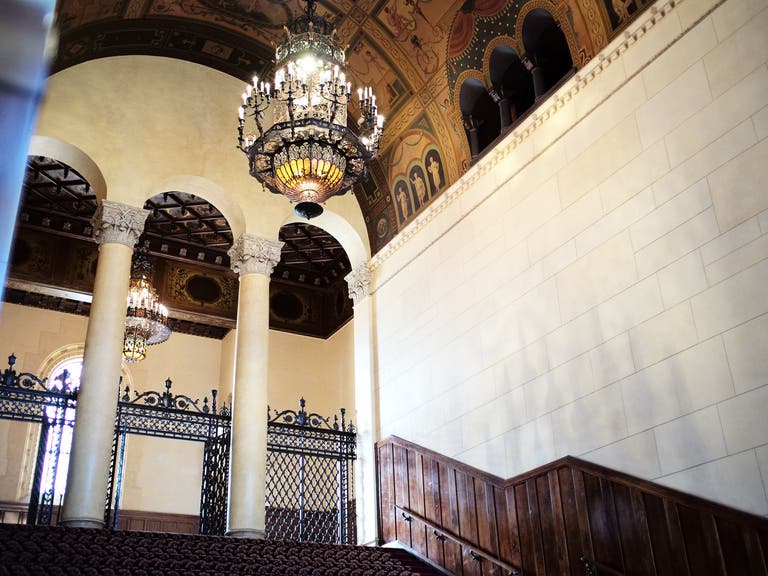
On October 13-14, David Lynch hosted his annual Festival of Disruption at The Theatre at the Ace Hotel in Downtown LA. The two-day event featured RZA performing Live From the 36th Chamber and a typically intriguing combination of music (Dover Quartet plays "Twin Peaks," Dylan Carlson, Justin Johnson, Katya, Mercury Rev, Mike Patton and DJ QBert; Richard Reed Parry, Saint Motel, TOKiMONSTA), talks (Lynch and his Twin Peaks collaborators, Francis Ford Coppola, Grace Jones), art exhibits, and of course, meditation sessions.
While you wait for this year's edition, what better way to celebrate the Festival of Disruption than to take a tour of David Lynch’s secret Los Angeles locations? Lynch has been a proud Los Angeles resident since 1970, when he decided that “the intense light” of the city beckoned.
We’ve arranged the list chronologically, starting with Lynch’s first feature film, Eraserhead (1972-1976), and ending with the recent, universally acclaimed Twin Peaks: The Return (2017). And yes, there will be spoilers.
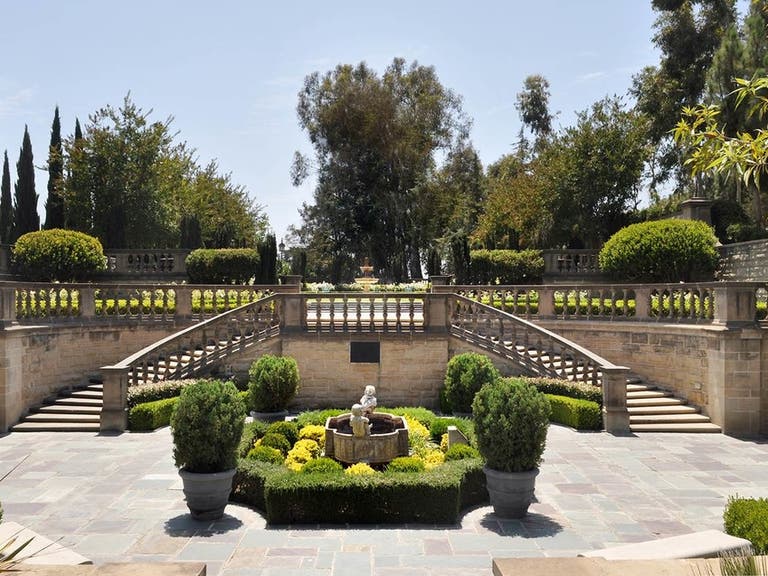
Greystone Mansion
Lynch arrived to Los Angeles in the very early 1970s, when he accepted a scholarship at the prestigious American Film Institute. The AFI was then located at the Greystone Mansion (905 Loma Vista Dr, Beverly Hills 90210) the estate of the 1920s millionaire Ned Doheny. The mansion was built between 1927 and 1930 and it represented the kind of splendor that Jazz-Age Los Angeles, flush with the success of the film and oil industries, wanted to show the rest of the world. Doheny was shot in his mansion in 1929 in a confusing episode, only a few months after he had moved his family in. By the time Lynch arrived, the AFI had been leasing the Doheny property from the city of Beverly Hills for five years.
In 1972, Lynch decided to start working at “the Center” (as he referred to the AFI and the mansion) on his first feature, an ambitious, strange project called Eraserhead. He commandeered the Doheny stables, down the road from the main building, and proceeded to turn them into “the Eraserhood.” “It was a little mansion in and of itself,” Lynch said in the authorized book of interviews Lynch on Lynch. “It had a maids’ quarters, and places above for different people who worked for Doheny, kitchens, bathrooms, like a little hotel, with a lot of other stuff around. And I got four or five rooms and the hayloft and a couple of garages.” Over the next few years, Lynch would obsessively work on his first cult masterpiece in his little fiefdom within the grounds of the Greystone Mansion.
For more details of this fundamental period in Lynch’s early career, check out the essential documentary David Lynch: The Art Life (2016), which includes a detailed account of how the visionary young filmmaker turned the dilapidated servants’ quarters of this old Beverly Hills mansion into a surreal landscape of timeless, black and white nightmares.

"Wild at Heart" - The MacArthur
Lynch has long been an admirer of the different layers of architectural history in Los Angeles. For the opening of Wild at Heart (1990)—set, as a title card tells us, in “Cape Fear—Somewhere near the border between North and South Carolina"—Lynch chose the MacArthur Hotel, a stunning Gothic Revival structure originally built in 1925 by Art Deco architect Claud Beelman as a World War I memorial. It became the Park Plaza Hotel later on, and is renowned for its luxurious decorations.
The stairs where Sailor kills the assassin that Lula’s mother had sent to kill him, and the stunning lobby ceiling (based on the Renaissance masterpiece Village Madama), are still recognizable from this and other movies. Though The MacArthur (607 S. Park View St., Los Angeles 90057), adjacent to its namesake park, is no longer a hotel, it can be rented out for events and movie shoots. Appointments can be made to visit its interiors.
"Lost Highway" - Senalda Road
Fred Madison, the tortured protagonist of Lost Highway (1997), lives with his soon-to-be-dead wife in a very curious building in the Hollywood Hills, a concrete structure with odd windows and angles that could be described as something in-between Modernist and Brutalist. The building can be easily spotted if you drive down windy Senalda Road, a tiny street off Mulholland Drive. You may want to drive past the exterior and maybe take a photograph or two, but please do not disturb the occupants—or a smiling white-faced man might track you down at a party and creep you out with a phone call that makes no sense. (We can’t tell you who lives in the sprawling property, or whose home studio is there, but just remember that everyone, even great artists, deserves their privacy.)
"Mulholland Dr." - Caesar’s Restaurant
Lynch is the master of the creepy non-sequitur, and nowhere is this deployed more effectively than in the short interlude in Mulholland Dr. (2001), where the brilliant, underrated character actor Patrick Fischler, sitting in a booth at Winkie’s Diner, confides a scary premonition to a friend. The payoff, when they both go to the back of the diner and encounter… someone, is what The Independent has called perhaps “the best jump scare in cinema history.”
Though the prop Winkie’s sign says “Sunset Blvd” (Lynch allegedly based it on the Denny’s at Gower Gulch in Hollywood), the actual diner used for the shoot is the closed-down Caesar’s Restaurant (1016 W. El Segundo Blvd, Gardena 90247). The diner reappears a couple of times, reflecting the different facets of the two characters played by Naomi Watts. Visit the back of the recently shuttered Caesar’s at your own risk. You never know who might slither out of the trash enclosure and give you a heart attack.
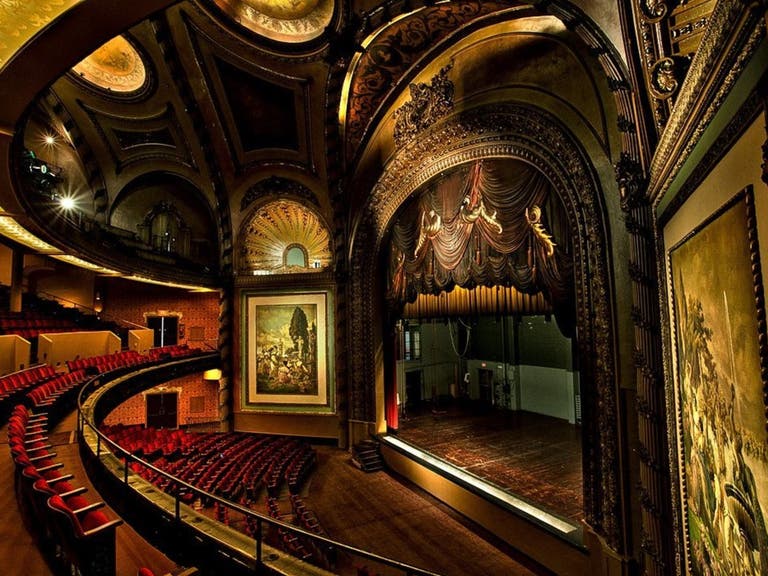
"Mulholland Dr." - Palace Theatre
The twist (literally) in the plot of Mulholland Dr. occurs when Naomi Watts (playing Betty) and Laura Helena Harrison (calling herself Rita) head out into the Los Angeles night after a torrid sexual encounter and visit a club called Silencio. Though the interiors were shot a a different Downtown L.A. theater, the secret entrance to the club is actually the back of the historic Palace Theatre. The Palace’s main entrance is on Broadway (between 6th and 7th Streets), but the immediately recognizable back entrance (minus the prop sign saying “Silencio”) is on Spring Street, between the Premiere Towers and LA Cafe.
630 S. Broadway, Los Angeles 90014
"Mulholland Dr." - Sunset Ranch Hollywood
When your life is falling apart, according to Mulholland Dr., it might behoove you to visit a very pale, very Southern-sounding cowboy who appears out of electricity in a ranch in the middle of the night.
The actual location where Justin Theroux’s director character found his cryptic angel of karma is the famous Sunset Ranch Hollywood (3400 N. Beachwood Dr., Los Angeles 90068), where any city slicker can get his or her cowboy or cowgirl on, only a few minutes from Heartache and Vine. Go during the day, though, for a much less unsettling experience.
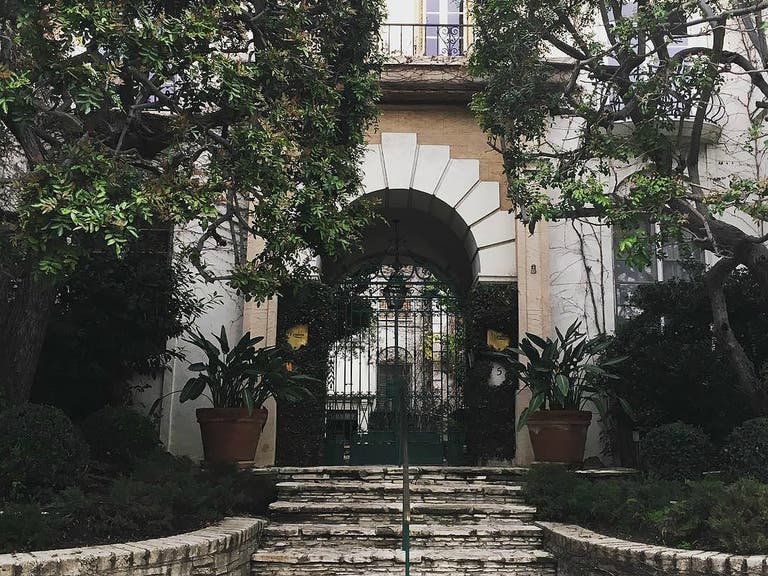
"Mulholland Dr." - Il Borghese Apartments & Snow White Cottages
Hopefully we are not spoiling anything by telling you that Naomi Watts plays two characters in Mulholland Dr.: Betty, an aspiring actress out of a Doris Day movie with a chipper, Nancy Drew-like demeanor (she’s rumored to have been modeled on Twin Peaks’ popular Audrey Horne); and she also plays Diane, an aspiring actress out of a depressing novel about dashed showbiz illusions, who doesn’t end well. At all.
Betty lives in her aunt’s unrealistically lush apartment, suitable for her dreamy existence. The location is the Il Borghese Apartments (450 N. Sycamore St., Los Angeles 90036), the Spanish-style Hancock Park property built by Charles Gault in 1929 and famous as many an aspiring actor and actress’ playground of choice. In contrast, Diane lives, breaks up with her girlfriend, wallows in her misery, and then finds her sad fate in a cramped apartment with perpetually drawn curtains.
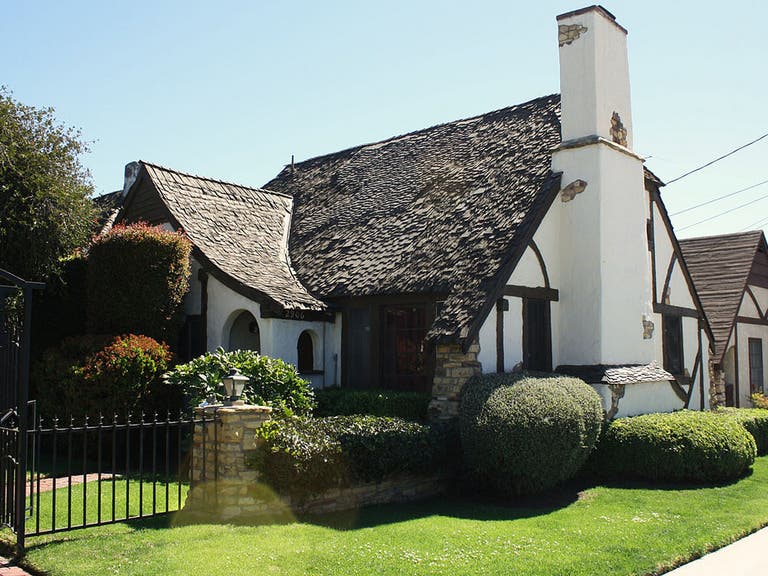
The exteriors of Diane’s place, though scored with menacing Angelo Badalamenti themes, are actually the extremely charming “Snow White Cottages” (2900 Griffith Park Blvd, Los Angeles 90027) built in Los Feliz in 1931, near the Walt Disney Studios location at the time. These cottages, in the “Fairy Tale Style” (like Atwater’s Tam-O-Shanter restaurant), were influential for Disney’s early animations, including Snow White.
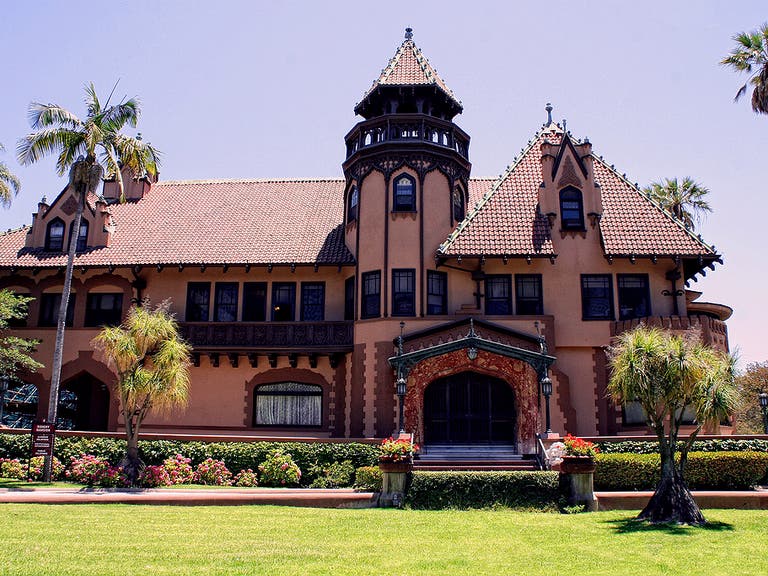
"Inland Empire" - Doheny Mansion
Several decades after Eraserhead, Lynch returned to purely experimental feature film making with Inland Empire (2006). He also returned to another historic estate connected to the Dohenys, the Doheny Mansion (10 Chester Pl., Los Angeles 90007). Built in 1899 and then purchased by Edward Doheny (Ned’s father), the opulent mansion serves to establish the starting point of Laura Dern’s enigmatic protagonist, Nikki Grace. Surrounded by the Doheny Mansion’s extreme luxury, Nikki—who is introduced as a famous, celebrated actress—receives the visit of a witch-like neighbor (played by Twin Peaks’ amazing Grace Zabriskie) who fills her with dread. The Doheny Mansion and the Chester Place grounds are now part of Mount Saint Mary’s University.
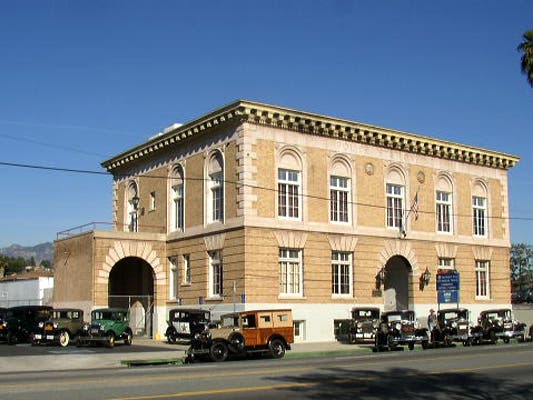
"Twin Peaks: The Return" - Highland Park Police Station
In May 2017, Lynch unveiled his late-period masterpiece, Twin Peaks: The Return, which he requested to be considered “an 18-hour movie” rather than a TV show (and he might have a point). Though none of the action takes place in Los Angeles, the city and environs have done duty as Twin Peaks, WA; Las Vegas, NV; Odessa, TX; and even Buckhorn, North Dakota.
The city's oldest surviving police station, the Highland Park Police Station served as the exteriors of the Buckhorn, ND police station, where an early part of the mystery takes place and where we first encounter one of the terrifying Woodsmen. Added to the National Register of Historic Places in March 1984, the Highland Park Police Station now houses the Los Angeles Police Museum (6045 York Blvd., Los Angeles 90042).
"Twin Peaks: The Return" - Glendale Gateway
You might not recognize not recognize the Glendale Gateway (801 N. Brand Ave., Glendale 91203) as the Las Vegas offices of Lucky 7 Insurance. Located on the north side of the 134 Freeway, this office complex is where the original Dougie Jones was a bad-apple employee and where the simple-minded Dougie-Coop saved his boss’s company with some supernatural help from the One-Armed Man—and some Red Room magic. But just imagine the cowboy statue (actually a prop) in front of the Californian-suburban office structure and mentally cover the nondescript modern sculpture with a white tarp and some red balloons and, voilà—it’s the front of Dougie’s workplace, where he disarmed Ike the Spike by moving “like a cobra.”
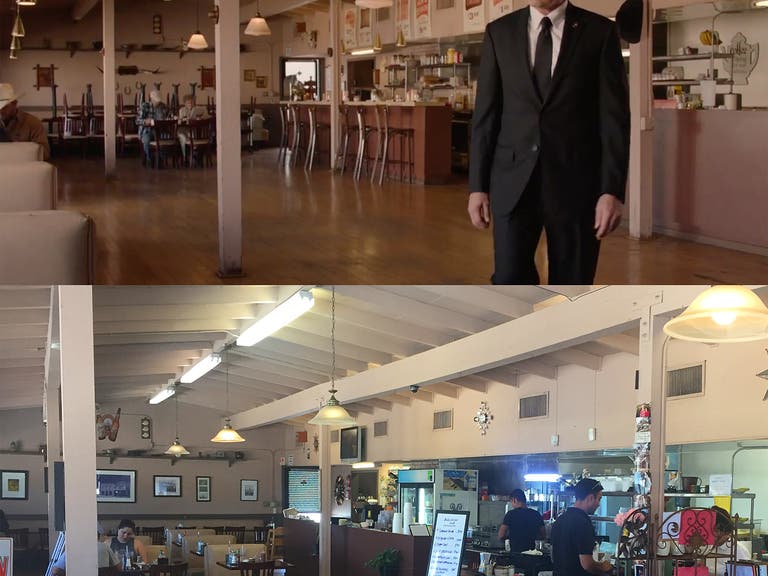
"Twin Peaks: The Return" - Eat at Rudy’s
Our last stop on the secret David Lynch tour of Los Angeles comes courtesy of the incredible—and incredibly controversial—episode 18, the “finale” of Twin Peaks: The Return. The man who may be Cooper, or may be someone named Richard, or may be some combined version of the man whom we variously knew as Agent Dale Cooper and Mr. C (Bad Coop), leaves a motel that’s not the same motel he entered the night before, gets in a car that’s different from the car he drove the night before, and realizes he’s in Odessa, Texas of all places. Suddenly, he drives by a diner and notices the large sign aimed at motorists: EAT AT JUDY’S.
We won't attempt to explain who (or what) Judy (or Jow-Day) is in the Twin Peaks mythos, but suffice it to say that she/it is a huge deal, and the mysterious character portrayed by Kyle MacLachlan recognizes it immediately and decides to stop over for a much-less-than-damn-fine cup of coffee. A lot of plot development ensues, including the return of someone who could be an extremely important character.
What you may not know is that both interiors and exteriors of the diner were shot in Wilmington (South of Carson, between San Pedro and Long Beach) at a locally famous roadside joint called Eat at Rudy’s (558 E. Anaheim St., Wilmington 90744). The Twin Peaks set designers merely swapped the “R” for a “J,” and the good ol', barn-like South Bay eatery entered Lynchian lore. Do not attempt to put handguns in the fryer, though.
